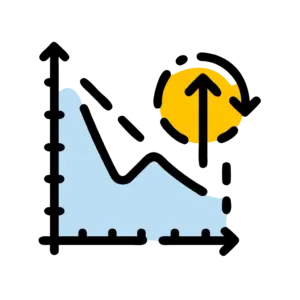How to Start Technical Analysis for Beginners
Technical analysis is a critical approach to understanding and predicting market movements based on historical price data and trading volume. It helps traders identify potential trends, entry and exit points, and market conditions using various tools and techniques.
What is Technical Analysis?
Technical analysis involves the study of price action and chart patterns with the aim of forecasting future market behavior. It is distinct from fundamental analysis, which involves economic and financial data, because technical analysis is data-oriented and is based solely upon charts, indicators, and patterns.
Best Technical Analysis Strategy
Creating a good trading strategy involves the merging of various technical analysis techniques to identify high-probability trades. Here’s how you can utilize candlestick patterns, support and resistance levels, price action patterns, technical indicators, and divergence analysis in your strategy

Candlestick Patterns
- Candlestick patterns are graphical representations of price action during a time interval and can signal future continuations or reversals.
- Recognize patterns like Doji, Hammer, and Engulfing to anticipate market reversals or continuations.

Support and Resistance Levels
- Support Level: A price level where demand is sufficient enough not to allow further decrease.
- Resistance Level: A level of price where selling pressure is strong enough to prevent further increase.

Price Action Patterns
- Price patterns such as head and shoulders, double tops and bottoms, and triangles provide clues regarding the potential reversal or continuation of trends.
- These patterns are formed by price movements and reflect the overall mood of market participants.

Technical Indicators
Enhance your analysis by adding technical indicators:
- Moving Averages (MA): Smoothes price data to identify trends.
- Relative Strength Index (RSI): Indicates the speed and change in price movements to identify oversold or overbought levels.
- Moving Average Convergence Divergence (MACD): Illustrates the interaction between two moving averages to detect changes in momentum.

Divergence Analysis
- Bullish Divergence: The indicator establishes a higher low while the price establishes a lower low, indicating potential for an upward reversal.
- Bearish Divergence: The indicator registers a lower high while the price registers a higher high, signaling potential for a downward reversal.
Benefits of Technical Analysis
Technical analysis helps traders identify trends and optimal trading opportunities across stocks, forex, and crypto markets.
Relies on factual data rather than emotions.
Helps traders identify optimal entry and exit points.
Suitable for any asset class, including stocks, forex, commodities, and cryptocurrencies.
Aids in recognizing trends early and riding them for maximum profit.


Risks and Limitations
Some indicators react after price movements, leading to delayed signals.
Markets can behave unpredictably, creating misleading patterns.
Sole dependence on technical indicators without considering market context can lead to poor decisions.
Technical Analysis vs Fundamental Analysis
While technical analysis focuses on price action and chart patterns, fundamental analysis looks at economic data, company performance, and industry trends. Combining both approaches can enhance trading accuracy and decision-making.
Is Technical Analysis Right for You?
If you are a person who prefers a data-based systematic approach while trading, technical analysis may be helpful. It requires practice, commitment, and continuous study but offers a systematic approach towards analyzing and acting within the markets.
Ready to master trading? Explore more in Trading Strategies and sharpen your trading edge!



